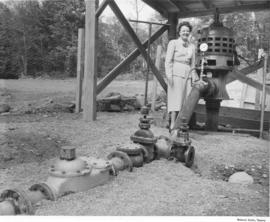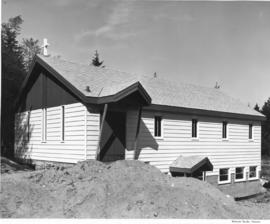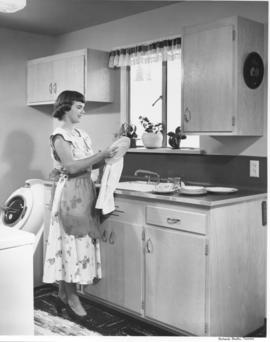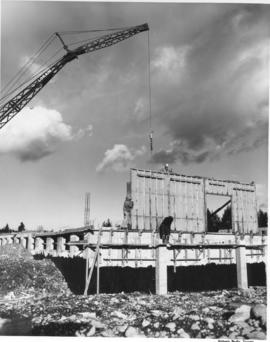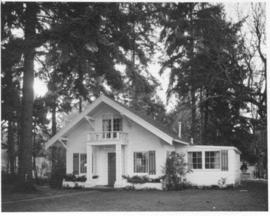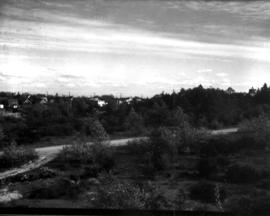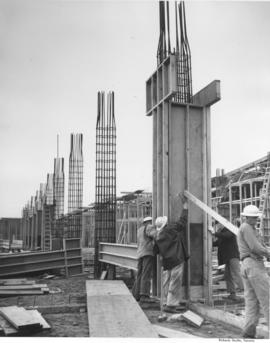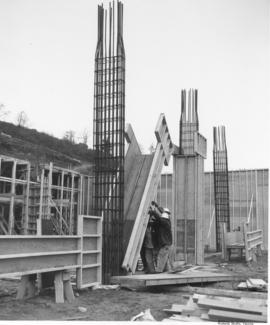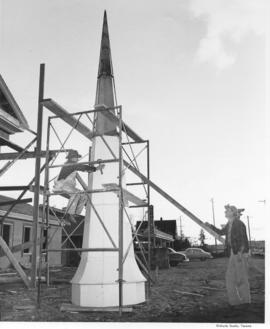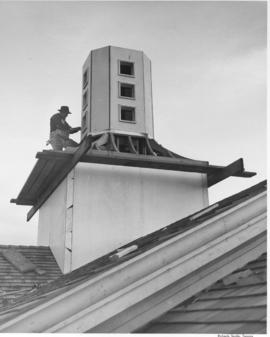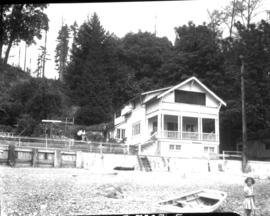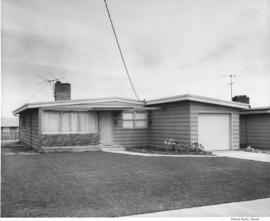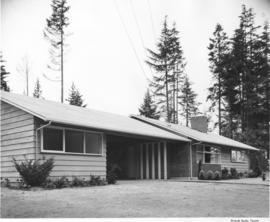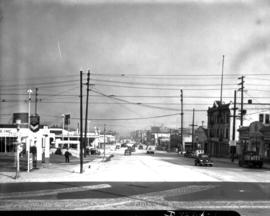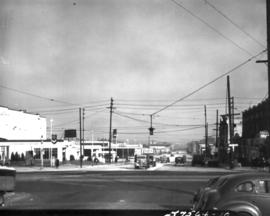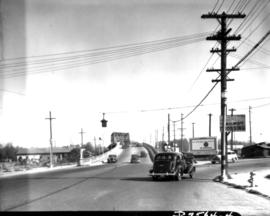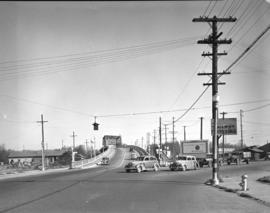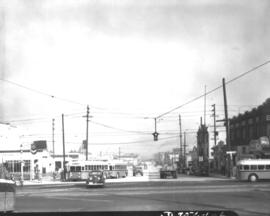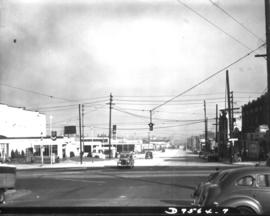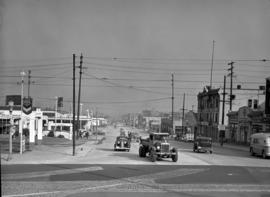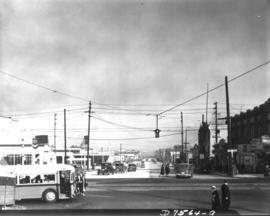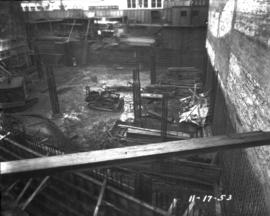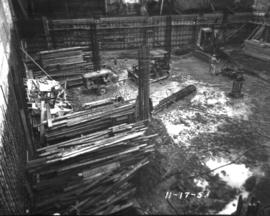This was how Puyallup Avenue appeared on October 20, 1938, looking east along the newly resurfaced street from Pacific Avenue to Bay Street and the bridge to the Seattle Highway. A stretch of 2601 feet of road, from East "G" Street to Pacific Avenue, was all new, including sidewalks, curbs and street surface. To construct the level 100- feet-wide road, the old asphalt was broken up and new concrete laid up to 20 inches thick. It was the first of the new series of Public Works Administration (PWA) contracts to be finalized and the first finished. The job took 60 days from start to finish and a ceremony was scheduled for October 21st to mark the record time. The newly surfaced road would bring traffic from the Seattle Highway directly into the downtown Tacoma shopping district. Standard Service Station and Firestone Store on left, OK Bakery and McKenzie Drug on right. (T. Times, 10/20/1938, p. 4).
Commercial streets--Tacoma--1930-1940; Bridges--Tacoma; Puyallup Avenue Bridge (Tacoma); Depressions--1929; Public Works Administration (Tacoma);
